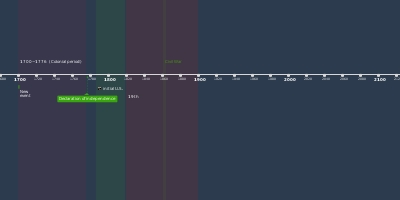Technologies (1 jan 1900 ano – 15 ago 1945 ano)
Descrição:
- Electrics -Electrification was one of the most important drivers of economic growth in the early 20th century. The revolutionary design of electric powered factories caused the period of the highest productivity growth in manufacturing. There was large growth in the electric utility industry and the productivity growth of electric utilities was high as well.
At the turn of the 20th century electricity was used primarily for lighting and most electric companies did not provide daytime service. Electric motors that were used in daytime, such as the DC motors that powered street railways, helped balance the load, and many street railways generated their own electricity and also operated as electric utilities. The AC motor, developed in the 1890s, was ideal for industrial and commercial power and greatly increased the demand for electricity, particularly during the daytime.
- Electric street railways -
Electric street railways developed into a major mode of transportation, and electric inter-urban service connected many cities in the Northeast and Midwest. Electric street railways also carried freight, which was important before trucks became widely introduced. The widespread adoption of the automobile and motorbus halted the expansion of the electric street railways during the 1920s
- Automobiles and trucks-
Harvey Firestone, Thomas Edison, Henry Ford, and Fred Seely in Asheville, North Carolina, 1918
- By the dawn of the 20th century, automobiles had begun to replace horse-drawn carriages. Numerous companies were building cars, but car manufacturing was challenging. Consequently, prices were high and production was low. Mass production techniques of the mid-1910s brought down the cost of automobiles and sales grew dramatically. By 1919 automobile registrations were 6.6 million and truck registrations were 898,000.
Replacing horses with cars and trucks eliminated enormous quantities of horse manure and urine from city streets, greatly reducing the labor for street cleaning and also improving sanitation and living conditions.[273] Reducing the number of horses for transportation freed up between one- sixth and one-quarter of all farmland.
- Highway system -
In 1900 there were only 200 miles of paved roads outside of cities in the U.S.
- By the late 1920s, automobiles were becoming common, but there were few highways connecting cities. The Federal road-building program ended in 1818, leaving states to build roads until the Federal Road act of 1916. A national highway system was agreed on in 1926 when an interstate program began, there were 23.1 million cars and 3.5 million trucks. The system was nearly complete when the U. S. entered World War II in December, 1941.
- Telephone -
Before 1900 telephones were used primarily by businesses. The number of telephones per 100 households was approximately 2 in 1900, but the number steadily grew until it peaked at 45 in 1929, then declined to 33 in 1933. Automatic telephone switching, which was introduced in 1892, eliminated the need for telephone operators to manually connect local calls on a switchboard. By 1929, 31.9% of the Bell system was automatic.
- Radio -
Radio communications using Morse code were introduced in the first decade of the 20th century. Their main use was for communicating with ships. Ship radio became more widely used after the sinking of the RMS Titanic in 1912.
Radio technology advanced rapidly. The triode vacuum tube made it possible to build amplifiers for broadcasting and for receivers. Radio circuit design also advanced, allowing better signals with less noise. By the early 1920s radios began being mass-produced and commercial broadcast stations were set up around the country.
Adicionado na linha do tempo:
Data:
1 jan 1900 ano
15 ago 1945 ano
~ 45 years
